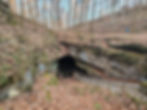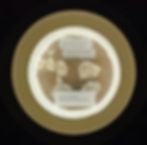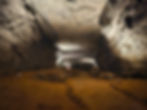Mammoth Passage Tour in Mammoth Cave National Park
- Dan Wagner
- Dec 25, 2023
- 5 min read
Updated: May 30, 2025
Featuring some of the largest cave rooms in Mammoth Cave, as well as numerous artifacts left behind by prehistoric Native Americans and historic items that contributed to the War of 1812, the Mammoth Passage Tour offers a glimpse into the cave's fascinating past and rich cultural heritage. This is a can't miss tour during the Christmas holiday season.


Bathrooms None
Water No
Stairs 65 descending, 65 ascending
Duration 1-1.25 hours
The tour kicks off with a quarter-mile stroll along the paved Historic Entrance Trail, starting at the Mammoth Cave Visitor Center. The path descends through a steep valley to reach the Historic Entrance, the largest natural opening into Mammoth Cave, serving as a passage for exploration for nearly 3,000 years. It's the very entrance that Native Americans of the Archaic and Early Woodland periods used while seeking out various minerals from within the cave.

After a short descent into the cave and a brief walk through the dimly lit passage known as Houchins Narrows, the tour arrives at the Rotunda, one of Mammoth Cave's most well-known cave rooms. The expansive chamber spans roughly one quarter acre and features a circular-shaped ceiling that towers nearly 40 feet above.

Here, in Mammoth Cave's sixth-largest cave room, three intersecting passages - Houchins Narrows, Broadway, and Audubon Avenue - converge. At this juncture, park rangers take a moment to discuss the cave's history, highlighting the mining of nearly a half million pounds of saltpetre, known to miners of the early 1800s as "peter dirt," which played a crucial role in the production of gunpowder during the War of 1812.

Visitors are invited to stroll along the Rotunda's paved walkways, where remnants of mining equipment from the early 1800s, such as oak plank leeching vats, wooden pipes, and a wood frame that once held a water pump, offer glimpses into the cave's past.

Following a pause at the Rotunda, the tour continues along Audubon Avenue, a vast paved passage named in honor of the renowned French ornithologist and artist of the 1800s, John James Audubon. Sent to America in 1803 at the age 18 to avoid conscription in Emperor Napoleon's army, Audubon transitioned into a businessman later in life. He journeyed down the Ohio River to western Kentucky and established a dry goods store in Henderson, Kentucky, when during this time he formed a friendship with Dr John Croghan, who had purchased the Mammoth Cave property in 1839 for $10,000. Croghan would later pay homage to his friend by renaming the Great Bat Room to Audubon Avenue.
As visitors will learn during various tours in Mammoth Cave, certain areas of the cave were repurposed to house tuberculosis patients in huts during the mid-1800s. The prevailing belief was that the consistent temperature and the exceptionally oxygen-rich air within the cave could help fend off the disease. In 1841, Croghan constructed two of these huts within Audubon Avenue, roughly 100 yards from the Rotunda. After the experiment proved to be an utter failure and the last patient left in March 1843, the huts in Audubon Avenue were removed from the cave, leaving no trace of their existence.

Along Audubon Avenue, close to the junction with Little Bat Avenue where the Historic Tour runs, a trunk canyon passage that was set up as a banquet hall in the early 1900s, park rangers often pause to delve further into the cave's history and give visitors an opportunity to view various display cases featuring Native American artifacts discovered within Mammoth Cave over the last two and a half centuries.

Among the showcased items are woven sandals crafted from the fibers of the local Rattlesnake master plant, torches made from cane reed, mussel shells, and gourd bowls.

The traces of Native American exploration within Mammoth Cave extend over several millennia, with the discovery of sunflower seed husks dating back 4,900 years ago being some of the oldest carbon dated materials ever discovered.

Since European explorers first ventured into the cave, it has produced numerous Native American mummies and skeletons, the remnants of nearly 100,000 cane reed torches, around two dozen pairs of woven sandals, and various vessels used during meals and for food storage.
In 1811, two skeletons of Native American origin, were unearthed by miners in the Rotunda, close to the entrance of Audubon Avenue. One skeleton belonged to a child, while the other was characterized as a colossal figure, measuring at a height of seven or eight feet. In the following years, more skeletons were disinterred, along with assertions that they were of a gigantic race, standing at heights of eight or nine feet, with massive jawbones. The current location of these remains is unknown.
In 1814, a mummy was discovered along Audubon Avenue by two saltpetre miners, adding to the collection of mummies previously displayed within Mammoth Cave. The miners, desiring to keep their discovery under wraps temporarily, covered the mummy with large stones and made markings on the cave walls for future reference. Unfortunately, upon their return, they couldn't relocate it, and the mummy stayed concealed until 1840 when a hotel owner rediscovered it. Sadly, the mummy had suffered extensive damage and fragmentation from the weighty stones placed on it, diminishing any interest and value that the hotel manager had hoped to benefit from. The location of it today is unknown. To learn more about the numerous mummies that once called Mammoth Cave home, give The Mummies of Mammoth Cave a read.

Following this stop, visitors during the Christmas season will find a lighted Christmas tree along the left side of Audubon Avenue. This longstanding tradition traces its roots back to 1883 when a group of local residents brought in a ten-foot pine decorated with ribbons and popcorn into the Methodist Church area of the cave.

Further along Audubon Avenue, the tour arrives at a large cave room known as Rafinesque Hall. The hall is named after Constantine Samuel Rafinesque, an eccentric French zoologist, botanist, and writer who explored Mammoth Cave in the early 1800s to study its natural fauna. Serving as the tour's turnaround point, visitors are given an opportunity here to view two collapsed passageways extending from the chamber, including Lookout Mountain to the left, before heading back.

In front of Rafinesque Hall is the gated Bunker Hill, where visitors can dive into the interesting history of the short-lived Mushroom Cave Mushroom Company. According to the story, the Mushroom Cave Company was established in 1881, when, drawing inspiration from the mushroom industry in the Paris catacombs, the company leased a section of Audubon Avenue to cultivate mushrooms. While the half-mile stretch of Audubon Avenue seemed unremarkable to cave tourists, it provided an ideal environment for mushroom beds due to the cave's constant temperature and the rich combination of bat droppings, cave soil, water, and other fertilizers. Two of the original beds used by the Mushroom Cave Mushroom Company still exist on the far side of the breakdown at Bunker Hill.
A mere four months after its inception, an unknown saboteur poured coal oil on the mushroom beds, leading to their destruction and the subsequent failure of the company before it could yield its first mushroom. The culprit remained unidentified, with potential suspects including the Mammoth Cave Hotel manager, who was displeased by conflicts between the mushroom company and his cave tours, the company's manager who had mismanaged the project, or a member of the founding family seeking to defraud investors. Still today, the person responsible for sabotaging the company has not been determined.

After Rafinesque Hall, the tour retraces its steps back to the Historic Entrance, concluding back at the visitor center.

It's important to note that the Mammoth Passage Tour route varies by season. In the fall and winter, the tour travels through Audubon Avenue to Rafinesque Hall. Conversely, during the spring and summer, this passage is skipped, and the tour opts to navigate through Broadway.
For an overview of all Mammoth Cave National Park ranger guided tours, check out A Guide To Cave Tours in Mammoth Cave National Park.
_edited.png)





















